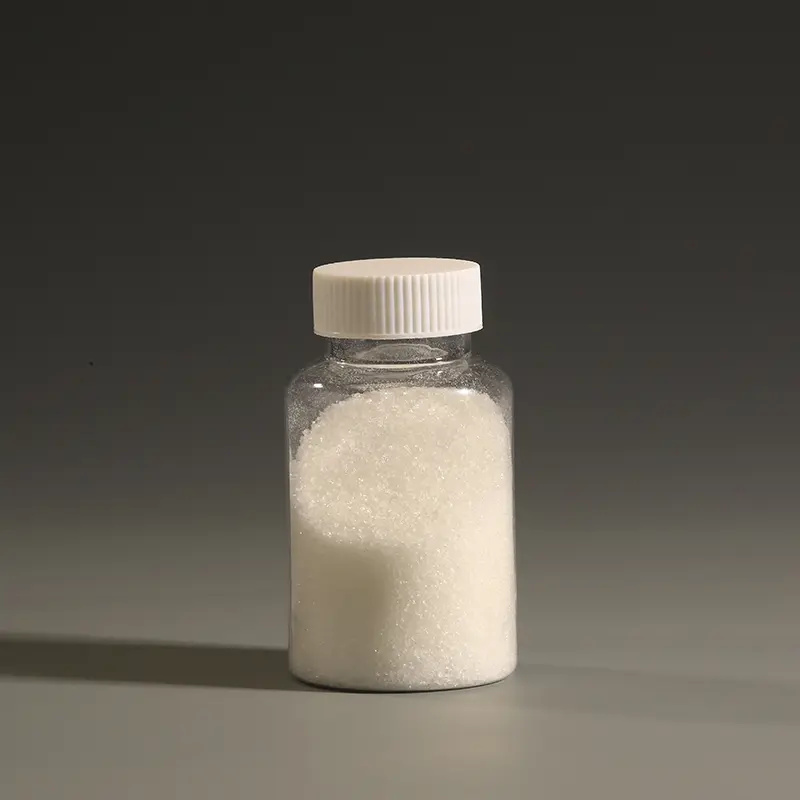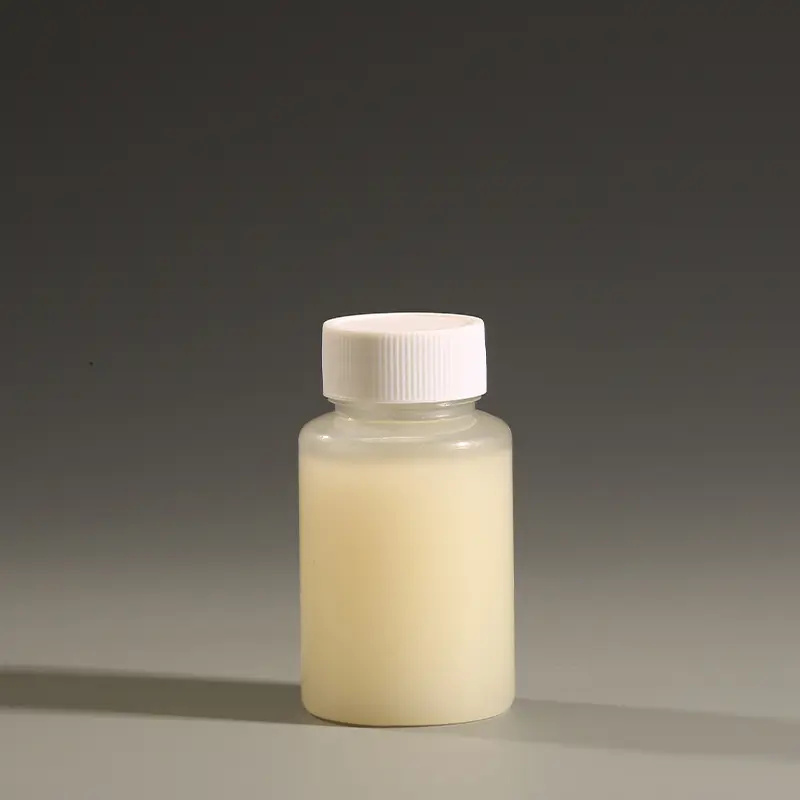Polyacrylamide Flocculant
Nā ʻōlelo kikoʻī ʻenehana PAM
Polyacrylamide (PAM) pauka
| ʻAno | Cationic PAM (CPAM) | Anionic PAM(APAM) | PAM nonionic (NPAM) |
| Ka nana aku | Pauda keʻokeʻo | Pauda keʻokeʻo | Pauda keʻokeʻo |
| Maʻiʻo paʻa, % | 88 MIN | 88 MIN | 88 MIN |
| Waiwai pH | 3 - 8 | 5 - 8 | 5 - 8 |
| Kaumaha Molekala, x106 | 6 - 15 | 5 - 26 | 3 - 12 |
| Degere o ka Ion, % | haahaa, Kūwaena, Kiʻekiʻe | ||
| Ka manawa hoʻoheheʻe, min | 60 - 120 | ||
Polyacrylamide (PAM) emulsion:
| ʻAno | Cationic PAM (CPAM) | Anionic PAM (APAM) | PAM nonionic (NPAM) |
| Maʻiʻo paʻa, % | 35 - 50 | 30 - 50 | 35 - 50 |
| pH | 4 - 8 | 5 - 8 | 5 - 8 |
| Viscosity, mPa.s | 3 - 6 | 3 - 9 | 3 - 6 |
| Ka manawa hoopau, min | 5 - 10 | 5 - 10 | 5 - 10 |
Nā hiʻohiʻona nui
ʻO nā waiwai hoʻopaʻa wai:Loaʻa i ka Polyacrylamide nā waiwai hoʻoheheʻe wai maikaʻi a hiki ke hoʻopili koke ʻia i ka wai e hana i kahi gel, a laila e loaʻa ai ka hoʻokaʻawale wai-paʻa kūpono i nā noi like ʻole.
Hoʻohui:Hōʻike kēia huahana i ka hoʻohui maikaʻi ʻana i ka wā o ka mālama ʻana i ka wai a me nā kaʻina hana sedimentation, e kōkua ana i ka hana wikiwiki ʻana i nā sediment a hoʻomaikaʻi i ka maikaʻi o ka mālama ʻana.
Koho Ionic:Loaʻa ka polyacrylamide non-ionic, cationic a me anionic e hoʻokō i nā koi uila o nā noi like ʻole, e like me ka hoʻokuʻu ʻana i ka sedimentation paʻa, flocculation, etc.
Paʻa kemika:Loaʻa iā ia ka paʻa kemika maikaʻi a kūpono i nā kaʻina mālama wai ma lalo o nā kumu pH like ʻole a me nā kūlana wela.
Nā kikoʻī kikoʻī
Hiki ke hāʻawi ʻia i ka ʻeke hoʻopihapiha e like me nā pono o ka mea kūʻai aku.
Ka waiho ʻana a me ka hoʻouna ʻana
Pono e mālama ʻia ka polyacrylamide ma kahi maloʻo a me ka ea, kahi mamao mai nā kumu ahi, nā waikawa ikaika a me nā alkalis, a ma kahi mamao o ka lā. I ka wā o ka lawe ʻana, pono ia e pale i ka makū a me ka extrusion e hōʻoia i ka maikaʻi o ka huahana.
Palekana Palekana
I ka wā e hoʻohana ai, pono ʻoe e ʻaʻahu i nā mea pale kūpono a pale i ka hoʻopili pololei ʻana me ka ʻili a me nā maka. Inā loaʻa ka pilikia, e ʻoluʻolu e holoi koke me ka nui o ka wai a ʻimi i ka ʻōlelo aʻoaʻo olakino.
ʻO ka ʻike ma luna nei he hiʻohiʻona wale nō o ka huahana. Pono e hoʻokumu ʻia nā ʻano hoʻohana kūikawā a me ka mālama ʻana i ke kūlana maoli a me ka ʻike i hāʻawi ʻia e ka mea hana.
Pehea wau e koho ai i nā kemika kūpono no kaʻu noi?
Hiki iā ʻoe ke haʻi mai iā mākou i kāu hiʻohiʻona noiʻi, e like me ke ʻano o ka loko wai, nā ʻano wai ʻino ʻoihana, a i ʻole ka hana lapaʻau o kēia manawa.
A i ʻole, e ʻoluʻolu e hāʻawi i ka brand a i ʻole ke ʻano o ka huahana āu e hoʻohana nei. E paipai kā mākou hui loea i ka huahana kūpono loa iā ʻoe.
Hiki iā ʻoe ke hoʻouna mai iā mākou i nā laʻana no ka nānā ʻana i ka hale hana, a e hoʻokumu mākou i nā huahana like a i hoʻomaikaʻi ʻia paha e like me kāu mau pono.
Hāʻawi ʻoe i nā lawelawe lepili OEM a pilikino paha?
ʻAe, kākoʻo mākou i ka hana maʻamau i ka hoʻopaʻa inoa ʻana, ka hoʻopili ʻana, ka hana ʻana, etc.
Ua hōʻoia ʻia kāu huahana?
ʻAe. Ua hōʻoia ʻia kā mākou huahana e NSF, REACH, BPR, ISO9001, ISO14001 a me ISO45001. Loaʻa iā mākou nā palapala hōʻoia ʻāina a hana pū me nā hale hana hoa no ka hoʻāʻo SGS a me ka loiloi kalapona.
Hiki iā ʻoe ke kōkua iā mākou e kūkulu i nā huahana hou?
ʻAe, hiki i kā mākou hui ʻenehana ke kōkua i ka hoʻomohala ʻana i nā formula hou a i ʻole ka hoʻonui ʻana i nā huahana i loaʻa.
Pehea ka lōʻihi o kou pane ʻana i nā nīnau?
E pane i loko o 12 mau hola ma nā lā hana maʻamau, a e hoʻopili ma o WhatsApp/WeChat no nā mea wikiwiki.
Hiki iā ʻoe ke hāʻawi i ka ʻike piha i waho?
Hiki ke hāʻawi i ka ʻike piha e like me ka invoice, ka papa inoa packing, ka bila o ka ukana, ka palapala kumu, MSDS, COA, etc.
He aha ka lawelawe ma hope o ke kūʻai aku?
Hāʻawi i ke kākoʻo ʻenehana ma hope o ke kūʻai ʻana, ka hoʻopiʻi ʻana, ka nānā ʻana i ka logistic, hoʻopuka hou a i ʻole ka uku no nā pilikia maikaʻi, etc.
Hāʻawi ʻoe i ke alakaʻi hoʻohana huahana?
ʻAe, me nā ʻōlelo kuhikuhi no ka hoʻohana ʻana, alakaʻi dosing, nā mea hoʻomaʻamaʻa ʻenehana, etc.








